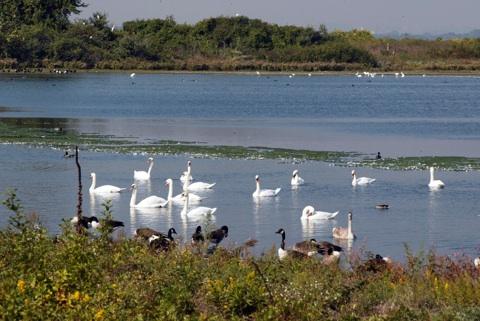While many businesses do annual planning meetings to move their vision forward, national parks typically operate under General Management Plans that remain in effect for ten, 20, or more years. Which makes it particularly important for park goers to both follow this process and provide input. If you frequent Gateway National Recreation Area in the greater New York-New Jersey metropolitan area, now is your chance to weigh in.
Gateway is no small operation. Indeed, it's broken into three areas -- Sandy Hook, Jamaica Bay, and Staten Island. Preserving history, culture, natural resources, and recreation areas, Gateway officials have a hefty responsibility when it comes to managing this diverse landscape. Here's a snippet from the park's recent GMP newsletter that touches on the task ahead.
Today, Gateway National Recreation Area is at a crossroads, one that needs your input. We are writing a new General Management Plan. This General Management Plan will be our roadmap to guide us for the next twenty years. These are your national park lands and waters. This is your opportunity to help shape a vision for their future.
The first General Management Plan for Gateway was finished in 1979. Since then we have a much better understanding of the natural and cultural significance of Gateway’s resources. In addition, the needs of our visitors are very different today than they were a generation ago. It is time to look to the future and determine how best to protect, improve and sustain the health of our natural and cultural resources.
Understandably, a lot has changed at Gateway during the past three decades. In recent years, a big concern that has sprung up around management of Gateway is how park officials have been working with developers to restore historic residences and buildings at Fort Hancock, which traces its military history to 1895. The developer had grand plans to turn some of the buildings into restaurants, bed-and-breakfast inns, and meeting space. But just this past August many of those plans collapsed when it was determined the developer didn't have the necessary financing to bring his vision to life and the National Park Service declared null and void the 60-year-lease given to the developer eight years ago for three dozen historic buildings
Will the GMP now in the works address this issue? The Asbury Park (N.J.) Press certainly hopes so. Here's a snippet from a recent editorial in the paper:
The first and foremost goal of the park service should be to reject any plans from developers that would limit the public's full enjoyment of the park, as would its lease agreement with Sandy Hook Partners' James Wassel. That agreement was canceled in August because Wassel could not demonstrate he had adequate backing — 10 years after he was chosen by the park service to rehabilitate 36 buildings at Fort Hancock. A clause in the lease, however, has allowed Wassel to appeal to an arbitrator, and a decision is pending — one that will have major ramifications for the park.
Unfortunately, a lack of dollars so far has prevented the Park Service itself from restoring and maintaining these historic facilities, and without some viable solution they'll continue to deteriorate and collapse.
To stay abreast of the planning process, bookmark this site -- http://www.nps.gov/gate/parkmgmt/gmp.htm -- and sign up there to receive email alerts concerning open houses and other information on the planning process.




Add comment